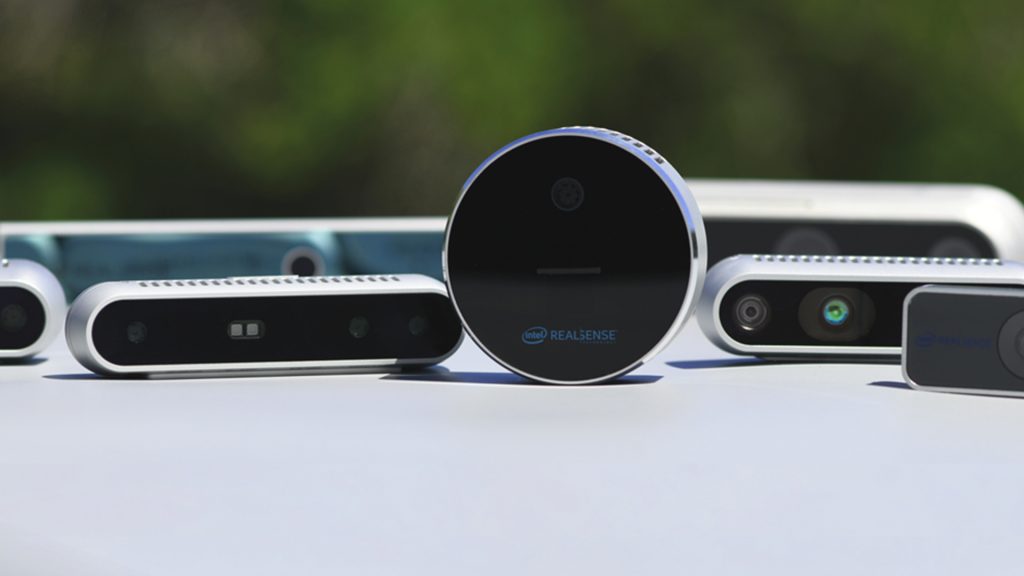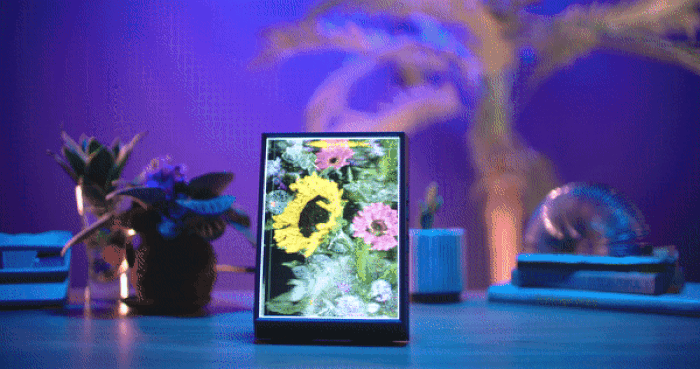
Looking Glass and Intel RealSense Depth Cameras
In a three-dimensional world, we still spend much of our time creating and consuming two-dimensional content. Most of the screens we use show us the world, flattened and distorted from the reality that we live in. Intel RealSense depth cameras see and understand the 3D world, and translate that into data that computers and humans can act upon – whether that’s a robot using the data to understand and navigate the world, or people using the devices to scan and measure environments and people.
Once you have that 3D data, there are many different things you can do with it. Turning it back into 3D objects can be difficult however; you could take the data and 3D print it or use a virtual or augmented reality headset to present your eyes with stereoscopic images that let you view it differently as you move around it, but these are quite high friction ways to see something in 3D.
Meet Looking Glass Portrait
Today, Looking Glass Factory announces their Looking Glass Portrait, a new way to view real-time 3D content, the first personal holographic display. It is designed for the millions of people who work or play in 3D in any way, whether they are artists, designers, developers, filmmakers, photographers or even just enthusiasts who are starting to explore 3D content capture and creation. Instead of requiring the use of a headset to view the content in 3D, the Looking Glass portrait looks almost like a digital photo frame, but is so much more – an accessible and advanced way to view volumetric 3D with no friction.

The Looking Glass Portrait
How does it work with Intel RealSense technology?
Because Intel RealSense cameras capture 3D natively, they can be used as a peripheral for the display that allows users to record and play back holographic recordings, for either stills or videos. Creators can use Intel RealSense cameras to record content that can then be easily played back by the Looking Glass Portrait, or could even be used as a real-time holographic communication system, allowing users to feel like they are really face to face with someone on a digital call. While we are all familiar with and used to video conferencing and calling software, a holographic call would be something else entirely. One common statistic that is surely familiar to most people is the idea that 70-93% of all communication is nonverbal, based on body language, expression and gestures. Holographic communication could open communication further, allowing us to more accurately gauge intent and meaning via digital mediums.
See things in a new way
While we are used to viewing content on 2D screens, this does not mean that much of the content we are familiar with is not 3D, or could not be easily adapted for a 3D holographic display. Many video games, for example, are real-time rendered 3D assets that could become new experiences with a 3D display. Imagine being able to ‘look’ around corners in a game dungeon by physically moving your head. Similarly, 3D movie formats already exist. While they might need to be re-rendered to be viewable on a holographic screen without the need for 3D glasses, this content already exists.

CIBER WOLF by Oscar Creativo – an example of a character that can be shown in 3D
For designers and architects there is the opportunity to share their creations with clients and customers in a new way, by displaying it on a screen that feels truly 3D at an affordable price. Adding in the ability to scan creations with an Intel RealSense depth camera and suddenly you have a pair of systems that work together to allow you to see the world in a whole new way.
Pre-order a Looking Glass Portrait today at look.glass/portrait.
Subscribe here to get blog and news updates.
You may also be interested in
A huge variety of package shapes, sizes, weights and colors pass through today’s e-commerce fulfilment or warehouse distribution centers. Using
In this How-To, we are going to share a simple way to 3D scan an environment that you can then

